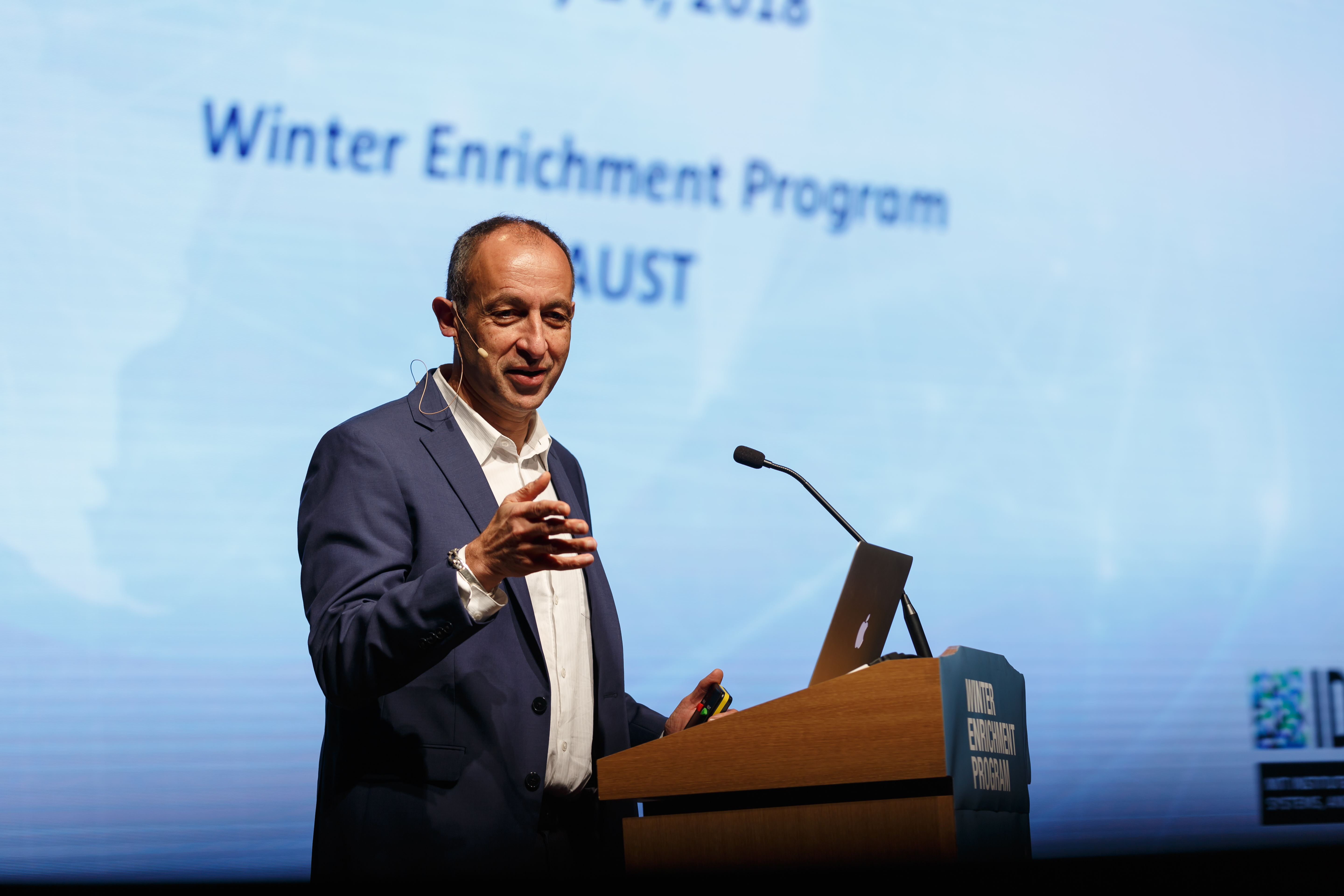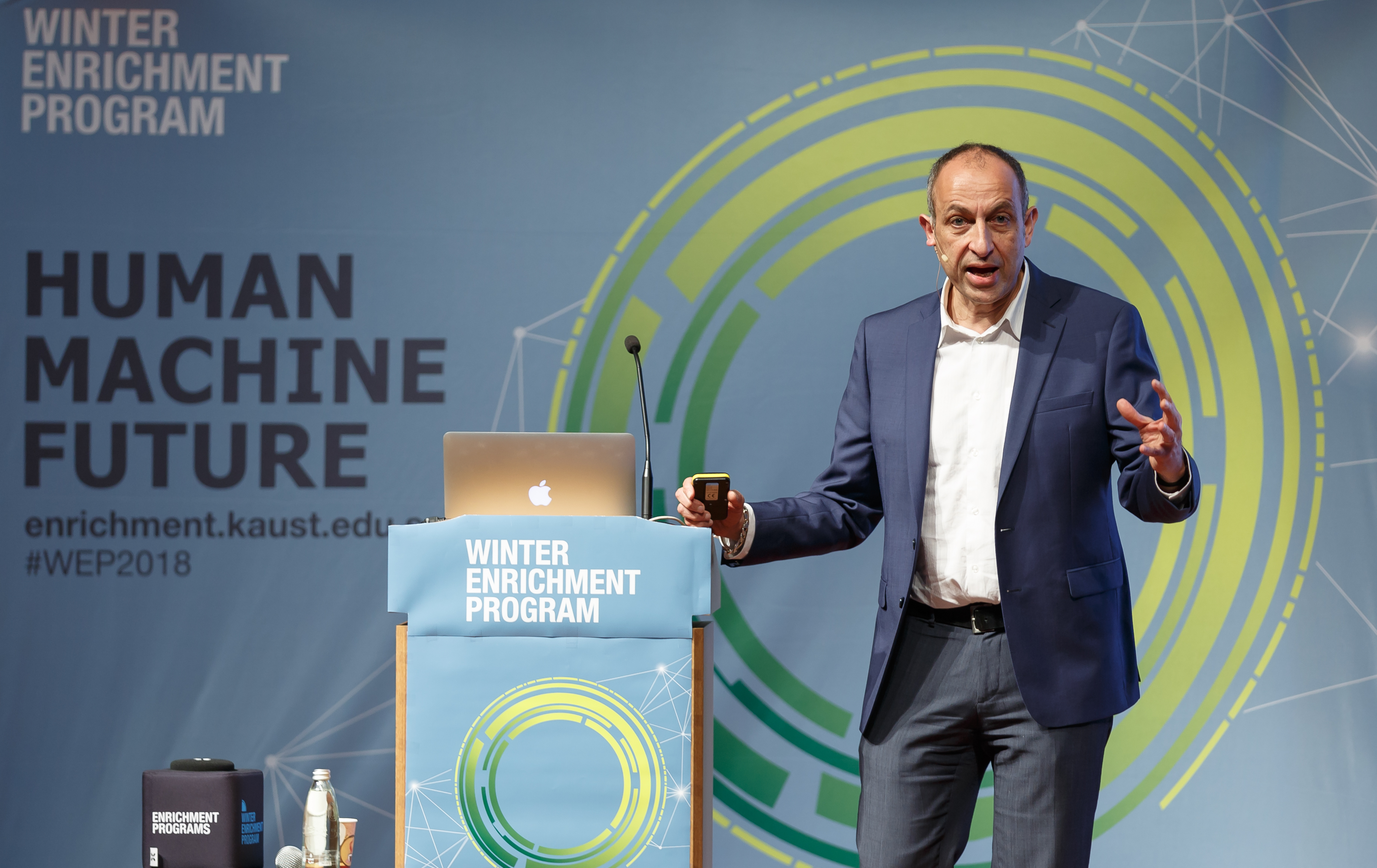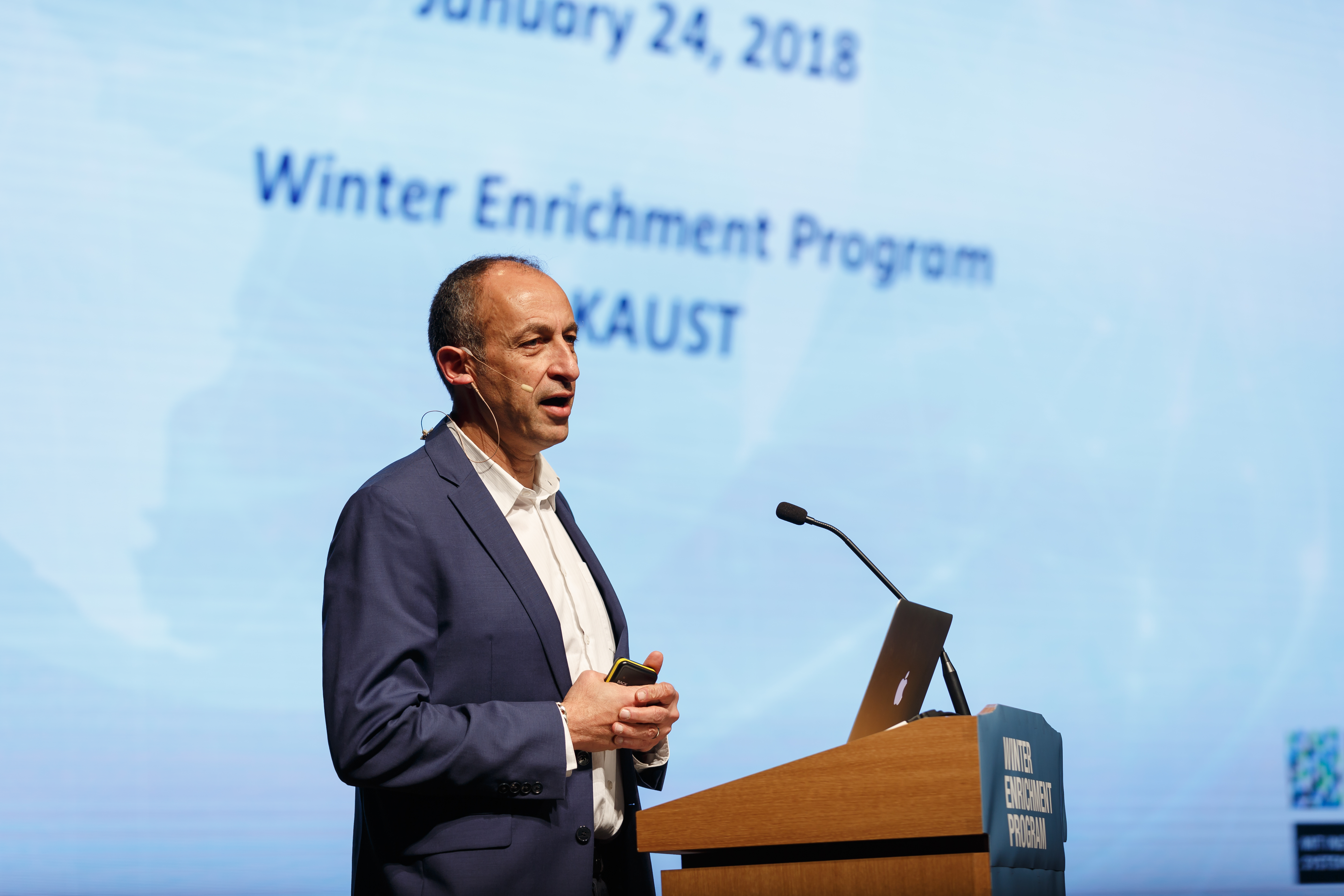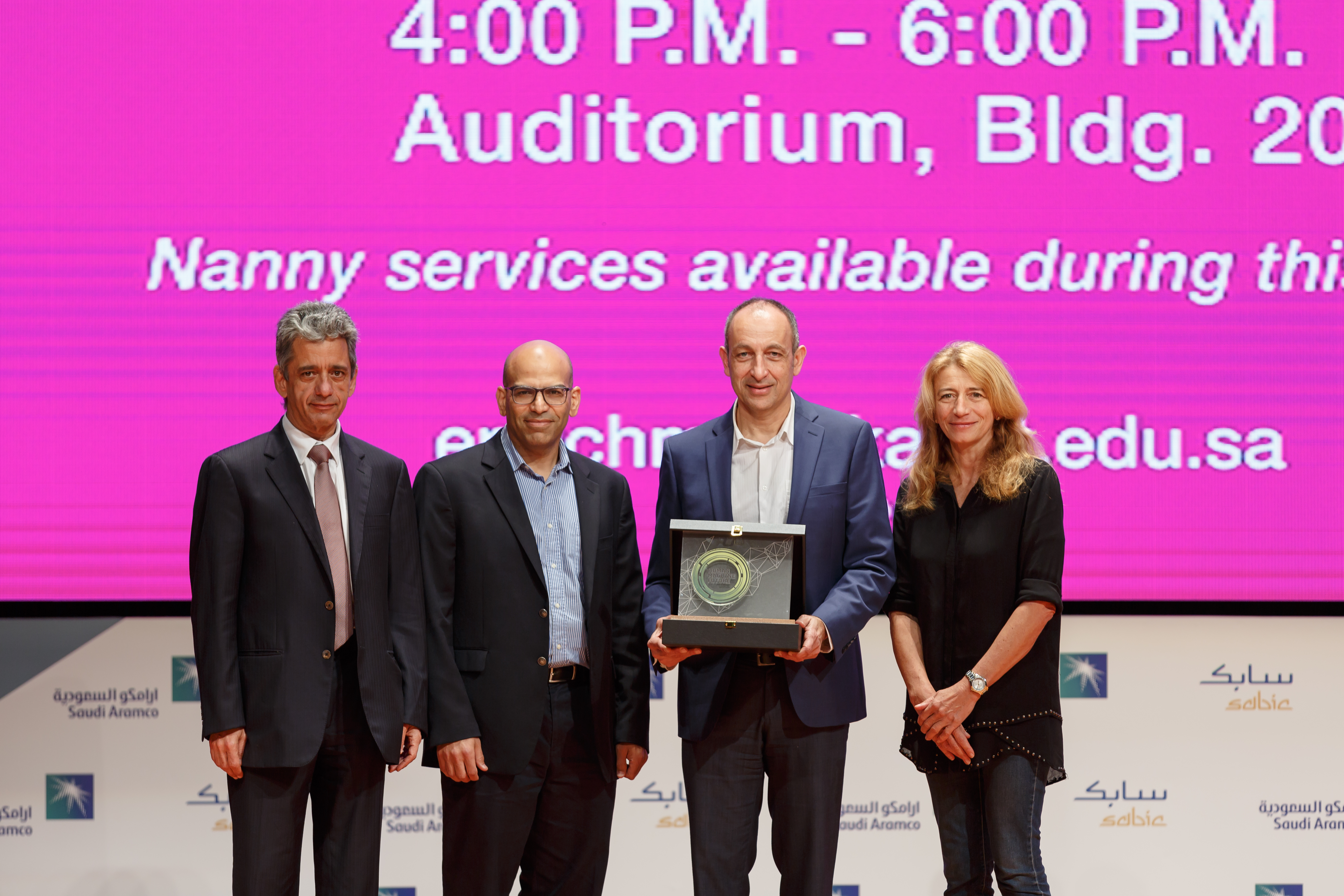Understanding networked systems

Munther Dahleh, director at the MIT Institute for Data, Systems, and Society, spoke on his group's research work in network systems at the KAUST 2018 Winter Enrichment Program. Photo by Asharaf K. AbdulRahman.
-By Caitlin Clark, KAUST News
Munther Dahleh, director at the MIT Institute for Data, Systems, and Society (IDSS), spends most of his time on MIT's campus in Cambridge, Massachusetts, where it frequently snows during the colder months.
"Bostonians are used to the snowy weather, but what happens when it snows two or three inches in Atlanta, Georgia?" he asked the KAUST audience during his 2018 Winter Enrichment Program (WEP) lecture on January 24.
Because Atlanta is warmer than Boston for most of the year, even a tiny amount of snow can incapacitate the city.
"In Atlanta, city officials won't be able to remove the snow fast enough to improve the roads, and panic behavior of the population results," Dahleh explained.
Fragile systems
Dahleh and his MIT team study the effects of scenarios like the Atlanta snowfall on populations and how large networked systems—like highway systems—exhibit fragility in response to disruptions that may lead to catastrophic cascades of failures. This phenomenon, referred to as systemic risk, emphasizes the role of system interconnection in causing these events.

Munther Dahleh, director at the MIT Institute for Data, Systems, and Society, discusses the complexities of network systems during his 2018 Winter Enrichment Program lecture. Photo by Asharaf K. AbdulRahman.
"If we figured out which people could stay on at their jobs longer and incentivize them to do that, we could avoid a huge congestion problem," Dahleh said. "However, we are still learning how to create this 'incentive architecture.' We examine how much slack the system has and how much perturbation it can take—we seek to move the system closer to stability by changing people's behavior."
Preventing failure
Dahleh focuses his research not only on transportation networks, but also on other networked infrastructures such as the electrical grid and financial markets.

Munther Dahleh, director at the MIT Institute for Data, Systems, and Society, spoke on his group's research work in network systems at the KAUST 2018 Winter Enrichment Program. Photo by Asharaf K. AbdulRahman.
In Dahleh's middle layer, he and his team want to "get the maximum effectiveness out of the system and prevent 'bad' behavior like congestion or a cascade failure," he said.
Real-time interactions
"Ten or 15 years ago, researchers like me had our work divided into silos," Dahleh noted. "One silo thought about physical systems and analyzing the systems and the other thought about theories. The two silos didn't talk to each other because they didn't need to. Today, however, the real-time aspect of our interactions with these systems brings the two silos together. You aren't able to understand the system without understanding the interactions of people with it."
Through data, Dahleh noted, researchers can better understand human interactions with networked systems—but gathering the data can be problematic.
"Data is everywhere in the world now, and we can measure almost anything we want with it. Data is a positive enabler, but in order to understand it, we have to build models with it. Theories are needed to develop models, and then we have to realize an abstract model in real life," he said.

Munther Dahleh (second from right), director at the MIT Institute for Data, Systems, and Society, receives thanks for his keynote lecture during the KAUST Winter Enrichment Program from the Enrichment Programs team. Photo by Asharaf K. AbdulRahman.
Related stories:
- Art as a window into sight
- Hackers and the Internet of Things
- The day the earth smiled
- Leaders—be the impact!
-
A career with purpose

